Ijraset Journal For Research in Applied Science and Engineering Technology
- Home / Ijraset
- On This Page
- Abstract
- Introduction
- Conclusion
- References
- Copyright
Advancement in Soil Analysis for Tailored Tomato Cultivation Using Deep Learning & IoT
Authors: Dr. K. Periyarselvam, Myshri R, Sowmiya M, Lilly G
DOI Link: https://doi.org/10.22214/ijraset.2024.60739
Certificate: View Certificate
Abstract
In the agriculture sector, one of the major problems in the plants is its seed diseases. The seed diseases can be caused by various factors such as viruses, bacteria, fungus etc. Most of the farmers are unaware of such diseases. That\'s why the detection of various diseases of seeds is very essential to prevent the damages that it can make to the plants itself as well as to the farmers and the whole agriculture ecosystem. Regarding this practical issues, this research aimed to classify and detect the plant\'s diseases automatically especially for the tomato plant. As per the hardware requirement, PC Sis the major computing unit. Image processing is the key process of the project which includes image acquisition, adjusting image ROI, feature extraction and convolution neural network (CNN) based classification. Here, Python programming language, OPENCV library is used to manipulate raw input image. To train on CNN architecture and creating a machine learning model that can predict the type of diseases, image data is collected from the authenticated online source. On providing the soil nutrient values obtained using NPK sensor, the recommendation of the suitable crop is displayed. The proposed system takes nitrogen, phosphorus, potassium values from the soil and recommends crop that is best suitable for the soil.
Introduction
I. INTRODUTION
Tomato (Solanum lycopersicum) is one of the most widely cultivated and economically important vegetable crops globally. However, the productivity and quality of tomato crops are often threatened by various diseases that affect different parts of the plant, including the seeds.
Early detection and effective management of these diseases are crucial for ensuring optimal yield and quality. Traditional methods of disease detection in tomato seeds rely on visual inspection by trained experts, which can be time-consuming, subjective, and prone to human error. With the advancements in computer vision, image processing, and machine learning, there is a growing interest in developing automated systems for the prediction of tomato seed diseases.
The NPK sensors , soil moisture sensors , microcontroller and wireless communication module make up the soil nutrient monitoring system . The soil’s acidity is a determined by PH sensor , data from the sensor is gathered by the microcontroller and send to the cloud for the processing. When a disease is detected the system triggers an automated response signaling an activation of a pest control mechanism. These mechanism controlled by a pump motor .monitoring capabilities, enabling farmers to access real-time data and receive alerts on their mobile devices. This remote access empowers farmers to make informed decisions and take timely actions, ultimately enhancing the efficiency and productivity of onion farming while reducing costs and environmental impact.
Overall, this integrated system represents a significant advancement in onion crop management, offering farmers a comprehensive solution for monitoring, disease detection, and pest control. By leveraging cutting-edge technologies, this system not only safeguards crops from diseases but also promotes sustainable agriculture practices, ensuring a more secure food supply for future generations.
A. Embedded System Implementation
An embedded system is one kind of a computer system mainly designed to perform several tasks like to access, process, and store and also control the data in various electronics-based systems. Embedded systems[1] are a combination of hardware and software where software is usually known as firmware that is embedded into the

hardware. One of its most important characteristics of these systems is, it gives the o/p within the time limits. Embedded systems support to make the work more perfect and convenient. So, we frequently use embedded systems in simple and complex devices too. The applications of embedded systems mainly involve in our real life for several devices like microwave, calculators, TV remote control, home security and neighborhood traffic control systems, etc.
B. Some Of The Related Research Work
Monitoring environmental conditions is the major factor to improve yield of the efficient crops. The feature of this paper includes development of a system which can monitor temperature, humidity, moisture and even the movement of animals which may destroy the crops in agricultural field through sensors using Arduino board and in case of any discrepancy send a notification as well as a notification on the application developed for the same to the farmer's smartphone using Wi-Fi/3G/4G.
They used different sensors with real time update on the status the sensors provide unlike existing systems which provides the status from time to time. The sensors that used helps in knowing the soil moisture, soil pH value, water level in the field. The water volume sensor detects the amount of water supplied to the field for a particular crop and supplies the required water and prevents overflow of water. The sensors are connected to the Arduino- UNO module for processing. The system can be operated from remote locations with the help of networking technology. This revolutionary change in Farming has generated various opportunities as well as new disputes.
II. SYSTEM ARCHITECTURE
Develop an integrated IoT-based agriculture management system for tomato fields. Research and optimize disease detection algorithms for tomato. Implement automated pest control systems triggered by disease detection. Deploy IoT- enabled monitoring systems for remote crop health monitoring. Develop decision support tools for tomato farming based on sensor data and disease detection.
A. Dataset Collection
Gather a large dataset of tomato seed images with labels indicating containing healthy plants and plants with various diseases. Ensure that the images are labeled with bounding boxes around the diseased areas.
B. Data Preprocessing
Preprocess the images, which may include resizing , normalization and augmentation
C. Model selection
Choose a machine learning model suitable for the task. Common choices include Support Vector Machines (SVM), Random Forests, or Convolutional Neural Networks (CNNs).
D. Training
Train the chosen model on the preprocessed data. Split the dataset into training and validation sets to evaluate the model performance of the tomato seeds. the model's weights based on the error (loss) calculated between the predicted bounding boxes and the ground truth bounding boxes.
E. Validation
Validate the trained model on a separate dataset to evaluate its performance. Adjust hyperparameters and training strategies as needed to improve the model's accuracy.
F. Inference
Once the model is trained and validated, you can use it for inference on new images to detect plant diseases. The model will output bounding boxes and class labels for the detected disease
III. LITERATURE SURVEY
Literature survey on tomato seed disease prediction encompasses exploring existing research, methods, and technologies related to the automated detection and classification of diseases affecting tomato seeds.
Here's a structured approach to conducting a literature survey on this topic: Search Databases and Repositories: Utilize academic databases such as PubMed, IEEE Xplore, Google Scholar, and ResearchGate to search for peer-reviewed journal articles, conference papers, and research reports related to tomato seed disease prediction. Additionally, explore relevant repositories and archives for datasets, code implementations, and research papers.
Filter and Review Literature: Filter the search results based on relevance and credibility. Focus on recent publications (within the last 5-10 years) that address the specific challenges and methodologies relevant to tomato seed disease prediction. Pay attention to studies that employ advanced techniques in computer vision machine learning, and agricultural science.
Identify Challenges and Limitations: Identify the key challenges and limitations faced by researchers in the field of tomato seed disease prediction.
These may include issues related to dataset availability, variability in disease symptoms, scalability of algorithms, and real-world applicability of automated systems.
Highlight Promising Solutions: Highlight promising solutions, methodologies, and technologies that have demonstrated success in addressing the challenges of tomato seed disease prediction. Look for innovative approaches, such as deep learning architectures, transfer learning, and multispectral imaging, that show potential for improving the accuracy and efficiency of disease detection. By following these steps, you can conduct a comprehensive literature survey on tomato seed disease prediction, gaining insights into existing research and emerging trends in this field
IV. EXISTING METHOD
There might not be a singular "existing system" for tomato seed disease prediction, but there are various approaches and systems developed by researchers and organizations to address this issue.
Here's a broad overview of existing methods and systems: Before the advent of advanced technology, tomato seed disease prediction relied heavily on visual inspection by experts Farmers would visually examine tomato seeds for symptoms of diseases such as bacterial spot, powdery mildew, or early blight.
While effective, this method is subjective, time-consuming, prone to human error. Some systems have been developed as mobile applications that allow farmers to capture images of tomato seeds using their smartphones. These images are then analyzed by machine learning models running on the device or in the cloud, providing instant feedback to the user about the health status of the seeds.
V. PROPOSED METHOD
Develop an integrated IoT-based agriculture management system for onion fields. Research and optimize disease detection algorithms for tomato. Implement automated pest control systems triggered by disease detection. Deploy IoT- enabled monitoring systems for remote crop health monitoring. Develop decision support tools for onion farming based on sensor data and disease detection.
Identifying plant diseases using YOLOv8 involves training a deep learning model to detect and classify diseases in images of plants. YOLOv8 is an extension of the YOLO (You Only Look Once) object detection algorithm, which is known for its speed and efficiency in real-time object detection tasks.
VI. BLOCK DIAGRAM

VII. HARDWARE REQUIREMENTS
A. Arduino
The Arduino Uno is an open source microcontroller board based on the microchip ATmega328P microcontroller and developed by Arduino and initially released in 2010.The board is equipped with sets of digital and analog input/output (I/O) pins that may be interfaced to various expansion boards (shields) and other circuits. The board has 14 digital I/O pins (six capable of PWM output), 6 analog I/O pins, and is programmable with the Arduino IDE (Integrated Development Environment), via a type B USB cable. It can be powered by the USB cable or by an external 9- volt battery, though it accepts voltages between 7 and 20 volts. It is similar to the Arduino Nano and Leonardo. The hardware reference design is distributed under a Creative Commons Attribution Share-Alike 2.5 license and is available on the Arduino website. Layout and production files for some versions of the hardware are also available.
The word "uno" means "one" in Italian and was chosen to mark the initial release of Arduino Software. The Uno board is the first in a series of USB-based Arduino boards, it and version 1.0 of the Arduino IDE were the reference versions of Arduino, which have now evolved to newer releases. The ATmega328 on the board comes preprogrammed with a bootloader that allows uploading new code to it without the use of an external hardware programmer.
While the Uno communicates using the original STK500 protocol, it differs from all preceding boards in that it does not use the FTDI USB-to-serial driver chip. Instead, it uses the Atmega16U2 (Atmega8U2 up to version R2) programmed as a USB-to-serial converter.
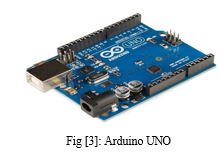
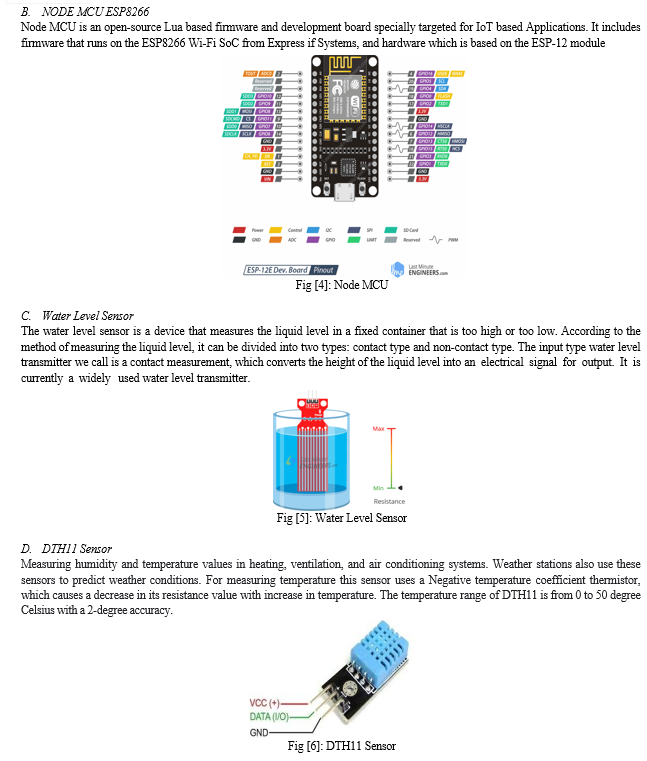

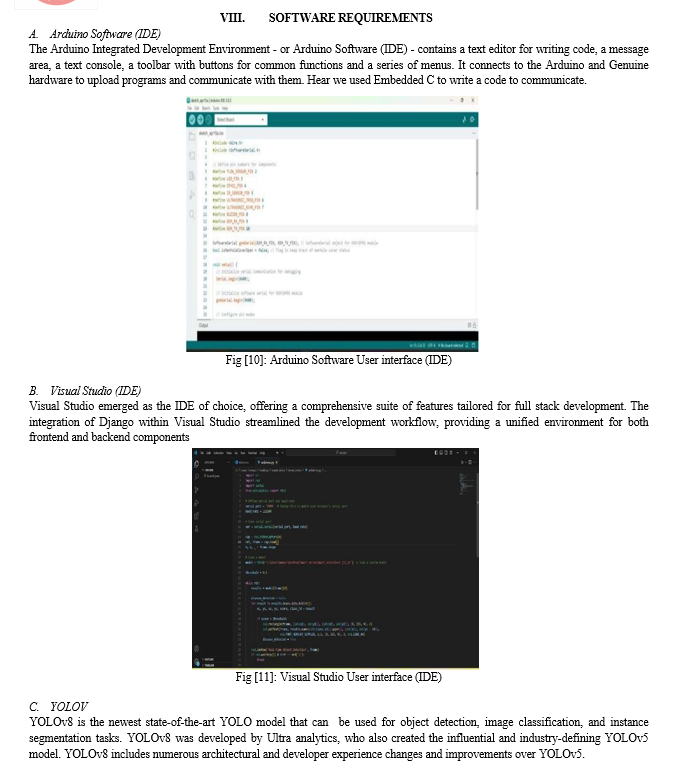
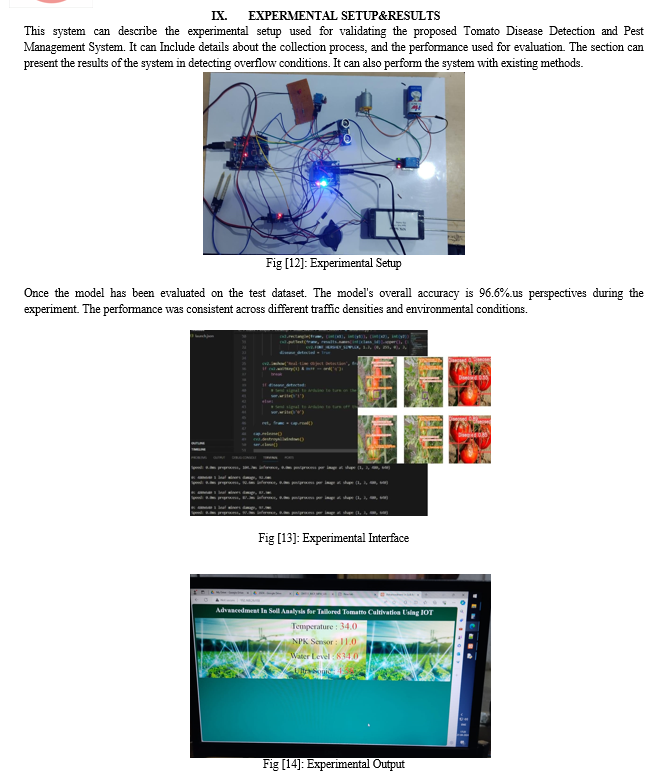
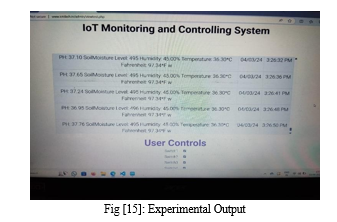
Conclusion
We project the classification through our system by deploying our model on a flask that observes illness and infected seeds.The project has several verticals in seed detection. Up to now, we have achieved in sleuthing the disease-affected seed. In the future, we will segregate the illness whether or not it is laid low with microorganisms, fungi, or infectious agents and specify the answer to the farmer within the field.
References
[1] Ding Jiang, Fudong Li, Yuequan Yang and Song Yu, A Tomato Leaf Diseases Classification Method Based on Deep Learning, IEEE, 2020. [2] Herlambang Dwi Prasetyo, Hendi Triatmoko, Nurdiansyah and Ika Nurlaili Isnainiyah, The Implementation of CNN on Website-based Rice Plant Disease Detection, ICIMCIS, 2020. [3] Anshika Sharma and Palak Khurana, Object recognition and segmentation techniques, IEEE, 2016. [4] Punam Bedi and Pushkar Gole, \"Plant disease detection using hybrid model based on convolutional Auto encoder And convolutional neural network\", Artificial Intelligence in Agriculture, 2021. [5] Shraddha Chourasiya; Aman Ashok Gadpale; Paramveer Singh Thethi; Pratik D. Nagdeve,”Apply machine learning and image processing to detect plant diseases”,20 March 2023 [6] N. Cheng et al., “Big data driven vehicular networks,” IEEE Newt., vol. 32, no. 6, pp. 160– [6] Anandakrishnan MG Joel Hanson, Annette Joy, Jerian Francis (2017), “Plant Leaf Disease Detection using Deep Learning and Convolutional Neural Network”, IJESC, Volume 7 Issue No.3. J. Clerk Maxwell, A Treatise on Electricity and Magnetism, 3rd ed., vol.2. Oxford: Clarendon, 1892, pp.68–73. [7] Vijay Singh, A.K. Misra (2016), “Detection of Plant Leaf Diseases Using Image Segmentation and Soft Computing Techniques”, Information Processing in Agriculture, (2016), Doi: [8] Joseph Redmon, Santosh Divvala, Ross Girshes, Ali Farhadi (2016), “You Only Look Once: Unified, Real-Time Object Detection”, arXiv:1506.02640v5 [cs.CV] 9 May 2016. [9] Jonathan Hui (2018), “Real-time Object Detection with YOLO, YOLOv2 and now YOLOv3” [10] Manikandan Mur gavel (2018), “How to train YOLOv2 to Detect objects. [11] Allen, R. H., Ganuschak, G., &Greig, M. (2002). Limited of remotely sensed data for crop condition monitoring and crop yield forecasting in NASS. http://www.nass.usda.gov/ research/abhor/remoteuse.pdf [12] Banyan, P., McConkey, B., Lafond, G. R., Moulin, A., &Pelchat, Y. (2004). Optimal time for remote sensing to relate to crop grain yield on the Canadian prairies. Canadian Journal of Plant Science, 84, 97?103. [13] Benedetti, R., & Rossini, P. (1993). On the use of NDVI profiles as a tool for agricultural statistics: The case study of wheat yield estimate and forecast in Emilia Romagna. Remote Sensing of Environment, 45, 311?326 [14] Bokken, V. K., &Stankevich, C. F. (2002). Improving an operational wheat yield model using phenological phase-based Normalized Difference Vegetation Index. International Journal of Remote Sensing, 23, 4155?4168 [15] Brisson, N., Mary, B., Rinpoche, D., Jeoffrey, M. H., Roget, F., Nicolaus, B., et al. (1998). STICS: A generic model for the simulation of crops and their water and nitrogen balances. I. Theory and parameterization applied to wheat and corn. Agronomies, 18, 311?346. [16] Himanshi, A. C., Ripley, E. A., & Lawford, R. G. (1999). Large-scale simulation of wheat yields in a semi-arid environment using a crop-growth model. Agricultural Systems, 59, 57?66. [17] De Fries, R. S., Hansen, M., Townshend, J. R. G., &Solberg, R. (1998). Global land cover classifications at 8 km spatial resolution: the use of training data derived from Landsat imagery in decision tree classifiers. International Journal of Remote Senain.
Copyright
Copyright © 2024 Dr. K. Periyarselvam, Myshri R, Sowmiya M, Lilly G. This is an open access article distributed under the Creative Commons Attribution License, which permits unrestricted use, distribution, and reproduction in any medium, provided the original work is properly cited.

Download Paper
Paper Id : IJRASET60739
Publish Date : 2024-04-21
ISSN : 2321-9653
Publisher Name : IJRASET
DOI Link : Click Here
 Submit Paper Online
Submit Paper Online

